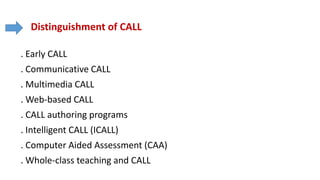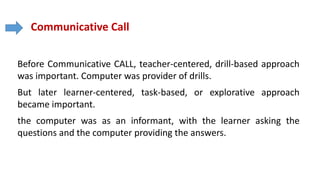This document discusses the history and development of computer-assisted language learning (CALL). It begins with early CALL programs in the 1960s focusing on drills and exercises. Communicative CALL emerged in the 1980s with a more learner-centered approach. Integrative CALL in the 21st century uses multimedia and the internet to facilitate collaborative project-based learning. The roles of computers, students, teachers and researchers have evolved from behavioral to sociocultural frameworks.




















